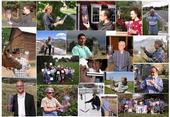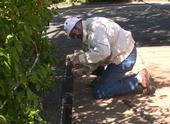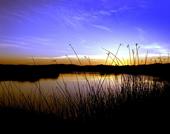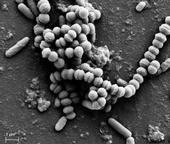- Author: Ann Brody Guy
Read the bill. That was the first policy lesson that Linda Adams, Secretary of the California Environmental Protection Agency, brought to the newly minted Ph.D.’s at the Graduate Research Symposium of UC Berkeley’s Department of Environmental Science, Policy, and Management (ESPM) earlier this month, where she delivered the keynote address.
The bill Adams was referring to was AB 32, the landmark Global Warming Solutions Act of 2006, on which she was the lead negotiator. She told a harrowing tale of the legislative pipeline.
“When Governor Schwarzenegger appointed me in 2006… I was just vaguely aware of AB 32, which was actually very close to his desk,” Adams said. “Being a good former legislative staffer, the...
- Author: Chris M. Webb

Sponsored in part by the National Oceanic and Atmospheric Administration (NOAA) and the National Science Foundation (NSF), the Community Collaborative Rain, Hail and Snow Network (CoCoRaHS) is a grassroots volunteer network of backyard weather observers.
With a presence in every state in the country, volunteers from all backgrounds work together to measure and map precipitation (rain, hail and snow) in their local communities. The data is used to help scientists across the country measure and track this very important and highly variable part of the climate system. By having thousands of volunteers nationwide providing precipitation data, scientists can track...
- Posted By: Jaime Adler
- Written by: Susie Kocher and Steve Quarles

Most people planning home improvement projects take into account how improvements will affect the home’s ability to withstand rain and weathering. We should also consider the threat of wildfire when planning home improvement projects this spring.
Most homes that burn during wildfires are ignited by flying embers landing on combustible material on or near homes. A wildfire passes by a home quickly, usually in a few minutes, while the exposure to flying embers can last for an hour or more. Therefore, activities homeowners undertake to make their home less ignitable from embers do the most to ensure its survival.
The most important home upgrade homeowners...
- Posted By: Trina Wood
- Written by: Peter Moyle, Professor of Fish Biology, UC Davis

The San Joaquin/Sacramento Delta and Suisun Marsh were once part of a continuous, enormously productive aquatic ecosystem that supported dense populations of fish from Sacramento perch to salmon, huge flocks of wintering waterfowl, and concentrations of mammals from beaver to tule elk. This amazing ecosystem is gone and cannot be brought back.
The once vast marshes have been turned into farmland and cities, protected by a complex system of levees. The patchy remnants of the original ecosystem are disappearing fast, as more and more native plants and animals become extinct or endangered. In their place, hundreds of alien species thrive in the altered conditions—crabs, clams, worms and fish from all over the...
- Author: Janet L. White

"Biofilms" surround us. They pervade our environment and our bodies. They form the dental plaque on our teeth and establish the chronic infections in our childrens' ear canals. They can spread on the watery surface of a contact lens.
Biofilms are now thought to be involved in 80 percent of human microbial infections, and are likely responsible for the resistance of chronic infections to antibiotics. Biofilms even form around "extremophiles" – such as the ancient blue-green cyanobacteria that thrive in extreme environments like the hot springs of Yellowstone National Park and the lake crusts of Antarctica. These microorganisms with fossil records going back 3.5 billion years also clog water pipes and create the slimy...



